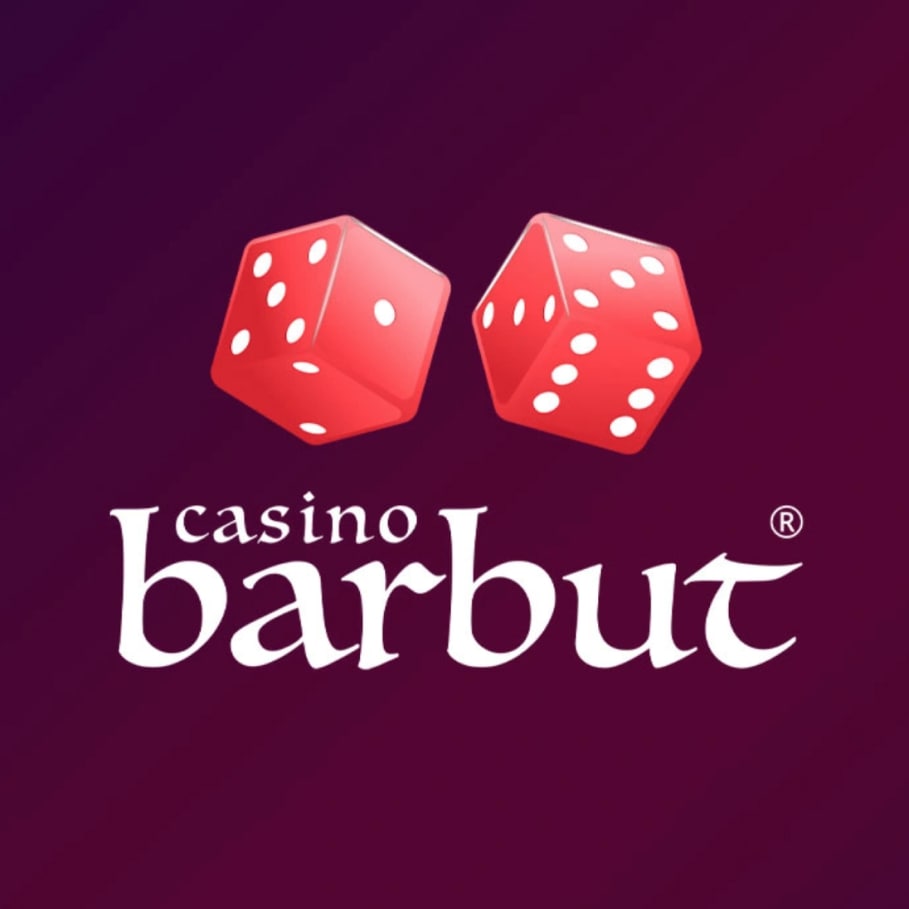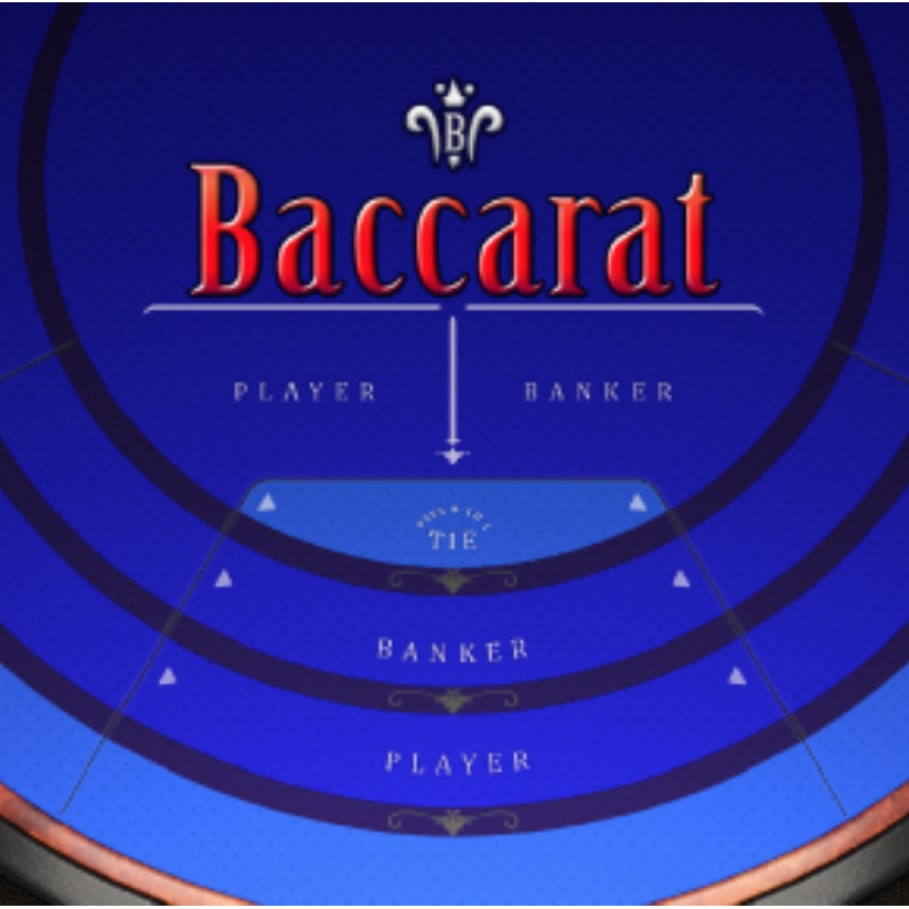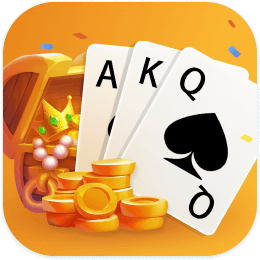Learn ➢ Essential Guide to Poker Tournament Strategy Natural8

Good poker tournament strategy is different to that of a cash game. Improve your winning rate with our essential guide on the best poker tournament tactics!  Play on GGPoker Chat with Us
Play on GGPoker Chat with Us
Dominic Field
Apr 27, 2023
 Table Of Contents 6. Tournament selection
7. Early Stages
8. Mid Stages
9. End Game
10. General Poker Tournament Strategy Tips
11. Live vs Online Poker Tournament Tips
12. High Stakes Tournament Strategy Adjustments
13. Super Short Stack All-in or Fold Charts
14. What’s A Push-Fold Strategy?
15. Human-Level Tips
16. Conclusion
In this article, we’re going to talk about some of the most recommended strategies for poker tournament play. From the early stages through to the end game, we’ll reveal the poker tournament tips you need to succeed. We’ll also cover big vs short stack strategy, plus the differences between online and live poker tournament strategies, as well as high stakes.
Table Of Contents 6. Tournament selection
7. Early Stages
8. Mid Stages
9. End Game
10. General Poker Tournament Strategy Tips
11. Live vs Online Poker Tournament Tips
12. High Stakes Tournament Strategy Adjustments
13. Super Short Stack All-in or Fold Charts
14. What’s A Push-Fold Strategy?
15. Human-Level Tips
16. Conclusion
In this article, we’re going to talk about some of the most recommended strategies for poker tournament play. From the early stages through to the end game, we’ll reveal the poker tournament tips you need to succeed. We’ll also cover big vs short stack strategy, plus the differences between online and live poker tournament strategies, as well as high stakes.
Ready to improve your chances of winning as a poker tournament player? Then let’s begin!
Tournament selection
Before we delve into the nitty gritty of poker strategies, there’s an important factor to consider first. All cash game players know the importance of sitting at the right table. But your game selection is just as crucial in poker tournaments, too.
Consider the number of seats at a table, for instance. If you play better short-handed, concentrate on 6-max events. There’s a big difference between a Multi-Table Tournament (MTT) and a single table Sit and Go (SNG) too. Not to mention turbos, deeper stacks, and heads-up events.
We’ll talk more about the differences between live poker tournaments and online ones later. But that’s also a factor. And if you opt for the internet, you’ll want to focus on the poker sites, which are full of fish. Finally, it’s vital not to play above your bankroll.

Early Stages
Once you’ve decided on the right game, you’ll need to think about the basic tournament poker strategy. In the early stage of a competition, look to avoid doing anything drastic. Hand selection is key. The popular mantra “tight is right” is almost always the right playing style in the early stage.
While you cannot win a tournament in the opening blind levels, you can certainly lose. Avoid contesting big pots with marginal hands. Accumulating chips to stay ahead of the increasing blinds is important, but not as critical as avoiding going broke. So don’t be afraid to fold if you’re in doubt.
The best approach to picking up chips at the start of a tournament is to open often but with small sizes. Do so from a late position as much as you can. It’s a simple but effective poker tournament strategy since everyone else will be playing tight.
Mid Stages
If you make it into the middle stages, your tournament poker strategy becomes less about chip acquisition and more about preservation. But your actions largely depend on your relative chip stack.
Short Stack Play
Smaller stacks, such as 20 Big Blinds or less, will have to tighten up. In such a spot, you are getting close to an all-in or fold situation. This is an effective short-stack tournament poker strategy that’s extremely difficult to combat.
Let’s say someone opens for 3x BB and you shove a stack of 18 BBs. This is a big re-raise to have to call and you’re putting your tournament life on the line, sending a strong message. Your opponent really has to have something good to make such a call. So you will be able to steal a lot of pots this way while protecting your equity if you do have a hand.
Super Short Stacks
When you get down to 10 BBs or less, your poker game is basically solved. Countless poker tournament strategy boffins have devised charts that tell you exactly which hands to shove in which spots. With no room for nuanced betting, you can simply memorise these all-ins or fold charts and play accordingly.
We’ve shared some of these push/fold charts.
Big Stack Strategy
If you’re sitting on a bigger stack, there’s no need to bully the poker table too much in the middle stages of a tournament. Wait until you get nearer to the bubble to crank up the pressure. But how do we define a “big stack”?
You could reasonably argue that anything upwards of 50 Big Blinds is a big stack. If you’re the chip leader at your specific table, regardless of the amount, you should certainly adopt a big stack strategy.
And what does that entail? Well, in general, it means loosening up and taking a few more risks. Look to steal more frequently, open the betting with a wider range of hands and defend your Big Blind more often pre-flop. Fire out a lot of feeler bets and 3-bets, trying to take down pots without a showdown.
Position
As with all forms of poker, table position is important. A key component of big stack poker tournament strategy is getting involved with playable hands while in position. We don’t just mean raising from the button, but instead, look to create opportunities.
You can call from the cut-off position with a hand like J-T suited against an early position raise, for instance.
Avoid 4-Betting
Most tournament players adopt a tight poker tournament strategy. So when they see the big stack getting involved, they’re happy to duck out of the way. Therefore, in situations where you 3-bet and find yourself raised, you should know that you’re likely in trouble.
Avoid going to war unnecessarily when you’re in such a strong position. And don’t make a habit of doubling opponents up easily.
End Game
As you near the final table of a tournament, it’s generally a good idea to loosen up. The majority of poker players will go the other way and try to make it into the money, or the final table, depending on how the tournament progresses. You can leverage that by playing wider ranges and stealing with weaker hands than normal, especially with a big stack.
It’s difficult to practise for the final stages of a tournament. The only way to do so is to find yourself in that position in the first place. But you can certainly work on your heads-up game by playing at dedicated two-player tables. Since many payout structures are top heavy, there is often a high jump between first and second place. So make sure to sharpen your game.
On a similar note, it’s not a great long-term poker tournament strategy to try and ladder up. Playing tight and waiting for others to bust, just to secure a better payout, is sub-optimal. It’s important to play to win, as the biggest rewards come for finishing first.
General Poker Tournament Strategy Tips
 Here’s some poker tournament strategy advice that applies to all stages of an event.
Here’s some poker tournament strategy advice that applies to all stages of an event.
Bet Sizing
A critical element of a good tournament poker strategy concerns the sizing of your bets. It’s hard to be too specific, as each situation is different. But in general, the correct size of the bet depends on your relative stack size, your opponent’s range, and the flop texture.
In the past, a post-flop continuation bet would have likely been around two-thirds the pot up to a full pot-sized bet. But it’s much more common today for players to make smaller wagers of around a quarter to half the pot.
On the turn, an interesting poker tournament strategy is to polarise your range. Over-betting the pot puts your opponent in a really difficult situation. You’re basically asking them to commit their tournament life to look you up. But it’s equally acceptable to continue playing small ball poker.
Defend Your Big Blind
We can’t stress enough the importance of defending your Big Blind in a poker tournament. Aside from the obvious psychological advantages of showing that you won’t be bullied, pot odds play a big part too. You’re just getting the right price a lot of the time, particularly when antes are in play.
Don’t be afraid to flat call a raise often, with anything even vaguely playable. Suited connectors and gappers of all sizes should be well within your defending range; even the likes of 3-2 suited. Against a poor opponent, you can literally play any two cards, right down to 7-2o.
Keep in mind that, in multiway pots, you’ll be getting even better odds. But naturally, it’s much tougher to realise your hand’s equity. You’ll need to be a little more selective with your defending hands, so focus on holdings that tend to flop nicely. Any connected or suited cards are acceptable for defending your Big Blind.
Defend Against Continuation Bets
A common poker tournament strategy mistake is to fold too often against c-bets. The theory is similar to the point about defending your Big Blind, in that you’re usually getting good pot odds. So if you have any equity at all, don’t be afraid to call.
Pick out a few strategic hands to float with too, in the event of your opponent checking the turn. You can then bluff the river in a lot of spots, but having backdoor flush outs and overcards just in case is always handy.
Deep Stacks
A good deep stack poker tournament strategy is much more similar to that of a cash game. As the stack sizes approach 100 BBs, poker players are much more likely to call 3-bets. You’ll likely find yourself in tougher spots more often as a result.
Let’s say you’re sitting on 30 BBs in a regular tournament and opt to 3-bet with K-Js. You see a Jack high rainbow flop and you immediately know you’re committed. Hands like A-J are not a concern; the chips are going to the centre regardless. But if you and your opponent both have 100BBs, you’re going to be much more wary.
Adjust your deep stack poker tournament strategy to polarise your three-betting range. Take out the hands that don’t flop well and that you’d never want to risk your entire stack with, such as A-To.
Live vs Online Poker Tournament Tips
 Should your online poker tournament strategy look different from that of your live game? In general, the approach is similar. But there are some subtle differences in the approach required. Let’s take a look.
Should your online poker tournament strategy look different from that of your live game? In general, the approach is similar. But there are some subtle differences in the approach required. Let’s take a look.
- Fundamentals: When playing online, your basic game needs to be much tighter. With no physical reads and less psychology involved, it’s all about optimising every decision. Make sure your pot odds, ranges and equity calculations are watertight.
- Standard: At regular stakes, online poker tournaments are often played at a higher standard. In a live game, players want to play more hands, as they’ve often made an effort to show up. There’s a higher proportion of drunk and social players too.
- Aggression: Expect passivity when playing in live events, for the aforementioned reasons. Not only will the standard of play be lower, but you’re far more likely to find calling stations. In online tournaments, you are likely to see much more raising, as people tend to play aggressively there.
- Value: Although value betting is an important part of any poker tournament strategy, it’s even more so when playing live. Slowplaying big hands can be a profitable play at a live table, due to the passivity of opponents.
- Bluffing: It’s a lot harder to get a bluff through when playing a live tournament. That’s due to the greater number of social and weak players. An online bluff carries a lot more weight.
High Stakes Tournament Strategy Adjustments
There’s not too much of a difference when it comes to a solid strategy for the nosebleeds vs regular stakes. Of course, the main consideration is that you’re up against a better standard of player. So you’re not likely to see many calling stations or fishy plays.
Another factor to think about is slow playing. It’s more important to get full value from a good hand against the best players. And since these guys tend to be more aggressive, you can slowplay more effectively.
In recent years, the trend in High Roller tournaments has been towards smaller pre-flop raises, backed up by small c-bets. But then, on the turn, huge bets of 2x to 3x the pot tend to be fired. If good players who consistently win at the highest stakes are taking such an approach, we can be sure that it works.
Super Short Stack All-in or Fold Charts
As promised, we’ve prepared some All-in or Fold charts for super short stacks tournament strategy. The following charts are for a 9-handed Texas Hold’em game and are based on the different positions at the table.
Pay attention to the hands highlighted in bright green which can be considered “no brainer” all- in hands. Hands highlighted in light green represent hands that have positive expectations but may not be worth the risk depending on your situation.
Note: These charts are generated using ICMIZER and some positions have been grouped together as the ranges for these positions are similar.
UTG and UTG+1 (10bb)
UTG+2 and Lojack (10bb)

Hijack (10bb)

Button and Cutoff (10bb)

Small Blind (10bb)
 As you can see from the charts from ICMIZER, you’ll be able to play a wider range when you’re in a late position with the simple reasoning that you’ll be more likely to meet little resistance when there are fewer players to contend with. At an earlier position, you’ll need to have a stronger starting hand just in case someone calls you. This is called a push-fold strategy.
As you can see from the charts from ICMIZER, you’ll be able to play a wider range when you’re in a late position with the simple reasoning that you’ll be more likely to meet little resistance when there are fewer players to contend with. At an earlier position, you’ll need to have a stronger starting hand just in case someone calls you. This is called a push-fold strategy.
What’s A Push-Fold Strategy?
Push-fold (also sometimes referred to as shove-fold) is a popular strategy every poker player should know. It particularly comes in handy when you have little chips. It doesn’t really work in cash games, where you can just pay to top up your stack.
Basically, using this strategy, you need to change your attitude to the “all or nothing” approach. At first, it may seem thoughtless, but it isn’t.
It is most frequently applied in faster-paced tournaments, such as Gos and Turbo Sit, because blinds tend to rise really fast there. However, even when participating in a deep stack event, you may end up short in chips, so the push-fold may turn out to be amazingly helpful.
It can be a life-saver with little chips to work with because it means you don’t have much room to manoeuvre. It is not possible for you to peel off a speculative flop and then just fold when you don’t connect.
Splashing around and trying to make a smart move is not an option here. As the stack is shorter, each chip becomes more valuable. Therefore, you should not only keep as many chips as possible to stay in the game but also maximise their value when you bet.
Apart from that, when there are fewer options to select from, the risk of overthinking and making mistakes is lower, so it can actually be beneficial for you, especially when you are a beginner and don’t have much experience with tournament poker.
It is much easier just to choose between folding and shoving - when you reduce your possible actions to only two, you’re going to be in the best condition to rebuild your starting stack.
Related: How to Utilize the Push-Fold Strategy With Push Fold Charts
Human-Level Tips
Take into account that poker tournaments can be long and exhausting, so in order to increase your chances of winning, you should also take care of some human-level preparations. After all, your chances of getting the whole prize pool rise depend not only on your strategy but the state of your body and mind as well!
To make it easier for you to survive the whole tournament and stay in good shape from the early stages to the end, always remember to:
- Come with necessary nourishments. It’s advised to bring healthy food, most importantly, but if necessary, you can also have some coffee or energy drinks. However, keep in mind that too much caffeine may contribute to higher impulsiveness and aggression at the poker table.
- Make sure you know which food groups stimulate your brain, and stay hydrated. Your brain needs to be fed properly to work well, so provide it with lots of water and stimulating food, like leafy vegetables, fatty fish, berries, or walnuts.
- Give yourself time before the event begins. Being too stressed out before the event won’t help you at all, so try to sit quietly, collect your thoughts, and relax before the tournament starts.
- Create a kind of playing ritual that calms you down. It will help you to keep calm and stay focused, no matter if you win or lose. It can be counting, repeating something quietly, or inhaling and exhaling slowly, for example.
- Check where the toilets are before the event starts. Take into consideration that you will most likely play long levels with just a few breaks, so you might be in a hurry, and looking for a toilet nervously when there’s little time will just make you more stressed out.
Conclusion
So there you have it. That’s our essential guide to poker tournament strategies all wrapped up. By adopting the tips in this article, you should be able to take your game to the next level in your future tournament entry.
However, there’s no substitute for practice. You can try out various tournament strategies and check which one works best for you in certain circumstances. It can be, for example, defending your Big Blind, bet sizing, defending against continuation bets, and many more.
It can also be a great idea to adjust your strategy to a particular stage of the tournament you’re participating in - the early stage, the mid-stage, or the final table. Apart from that, remember to make all the human-level preparations to let your body and mind be in the best shape before and during the event.
Why not get in some poker training right away while our advice is still fresh in your mind? We create a lot of opportunities for poker players to practise their strategies, adapted to various levels of experience, so you will certainly find something that suits you perfectly. Check out the selection of tournament tables at Natural8 today!
Before we delve into the nitty gritty of poker strategies, there’s an important factor to consider first. All cash game players know the importance of sitting at the right table. But your game selection is just as crucial in poker tournaments, too.
Consider the number of seats at a table, for instance. If you play better short-handed, concentrate on 6-max events. There’s a big difference between a Multi-Table Tournament (MTT) and a single table Sit and Go (SNG) too. Not to mention turbos, deeper stacks, and heads-up events.
We’ll talk more about the differences between live poker tournaments and online ones later. But that’s also a factor. And if you opt for the internet, you’ll want to focus on the poker sites, which are full of fish. Finally, it’s vital not to play above your bankroll.

Early Stages
Once you’ve decided on the right game, you’ll need to think about the basic tournament poker strategy. In the early stage of a competition, look to avoid doing anything drastic. Hand selection is key. The popular mantra “tight is right” is almost always the right playing style in the early stage.
While you cannot win a tournament in the opening blind levels, you can certainly lose. Avoid contesting big pots with marginal hands. Accumulating chips to stay ahead of the increasing blinds is important, but not as critical as avoiding going broke. So don’t be afraid to fold if you’re in doubt.
The best approach to picking up chips at the start of a tournament is to open often but with small sizes. Do so from a late position as much as you can. It’s a simple but effective poker tournament strategy since everyone else will be playing tight.
Mid Stages
If you make it into the middle stages, your tournament poker strategy becomes less about chip acquisition and more about preservation. But your actions largely depend on your relative chip stack.
Short Stack Play
Smaller stacks, such as 20 Big Blinds or less, will have to tighten up. In such a spot, you are getting close to an all-in or fold situation. This is an effective short-stack tournament poker strategy that’s extremely difficult to combat.
Let’s say someone opens for 3x BB and you shove a stack of 18 BBs. This is a big re-raise to have to call and you’re putting your tournament life on the line, sending a strong message. Your opponent really has to have something good to make such a call. So you will be able to steal a lot of pots this way while protecting your equity if you do have a hand.
Super Short Stacks
When you get down to 10 BBs or less, your poker game is basically solved. Countless poker tournament strategy boffins have devised charts that tell you exactly which hands to shove in which spots. With no room for nuanced betting, you can simply memorise these all-ins or fold charts and play accordingly.
We’ve shared some of these push/fold charts.
Big Stack Strategy
If you’re sitting on a bigger stack, there’s no need to bully the poker table too much in the middle stages of a tournament. Wait until you get nearer to the bubble to crank up the pressure. But how do we define a “big stack”?
You could reasonably argue that anything upwards of 50 Big Blinds is a big stack. If you’re the chip leader at your specific table, regardless of the amount, you should certainly adopt a big stack strategy.
And what does that entail? Well, in general, it means loosening up and taking a few more risks. Look to steal more frequently, open the betting with a wider range of hands and defend your Big Blind more often pre-flop. Fire out a lot of feeler bets and 3-bets, trying to take down pots without a showdown.
Position
As with all forms of poker, table position is important. A key component of big stack poker tournament strategy is getting involved with playable hands while in position. We don’t just mean raising from the button, but instead, look to create opportunities.
You can call from the cut-off position with a hand like J-T suited against an early position raise, for instance.
Avoid 4-Betting
Most tournament players adopt a tight poker tournament strategy. So when they see the big stack getting involved, they’re happy to duck out of the way. Therefore, in situations where you 3-bet and find yourself raised, you should know that you’re likely in trouble.
Avoid going to war unnecessarily when you’re in such a strong position. And don’t make a habit of doubling opponents up easily.
End Game
As you near the final table of a tournament, it’s generally a good idea to loosen up. The majority of poker players will go the other way and try to make it into the money, or the final table, depending on how the tournament progresses. You can leverage that by playing wider ranges and stealing with weaker hands than normal, especially with a big stack.
It’s difficult to practise for the final stages of a tournament. The only way to do so is to find yourself in that position in the first place. But you can certainly work on your heads-up game by playing at dedicated two-player tables. Since many payout structures are top heavy, there is often a high jump between first and second place. So make sure to sharpen your game.
On a similar note, it’s not a great long-term poker tournament strategy to try and ladder up. Playing tight and waiting for others to bust, just to secure a better payout, is sub-optimal. It’s important to play to win, as the biggest rewards come for finishing first.
General Poker Tournament Strategy Tips
 Here’s some poker tournament strategy advice that applies to all stages of an event.
Here’s some poker tournament strategy advice that applies to all stages of an event.
Bet Sizing
A critical element of a good tournament poker strategy concerns the sizing of your bets. It’s hard to be too specific, as each situation is different. But in general, the correct size of the bet depends on your relative stack size, your opponent’s range, and the flop texture.
In the past, a post-flop continuation bet would have likely been around two-thirds the pot up to a full pot-sized bet. But it’s much more common today for players to make smaller wagers of around a quarter to half the pot.
On the turn, an interesting poker tournament strategy is to polarise your range. Over-betting the pot puts your opponent in a really difficult situation. You’re basically asking them to commit their tournament life to look you up. But it’s equally acceptable to continue playing small ball poker.
Defend Your Big Blind
We can’t stress enough the importance of defending your Big Blind in a poker tournament. Aside from the obvious psychological advantages of showing that you won’t be bullied, pot odds play a big part too. You’re just getting the right price a lot of the time, particularly when antes are in play.
Don’t be afraid to flat call a raise often, with anything even vaguely playable. Suited connectors and gappers of all sizes should be well within your defending range; even the likes of 3-2 suited. Against a poor opponent, you can literally play any two cards, right down to 7-2o.
Keep in mind that, in multiway pots, you’ll be getting even better odds. But naturally, it’s much tougher to realise your hand’s equity. You’ll need to be a little more selective with your defending hands, so focus on holdings that tend to flop nicely. Any connected or suited cards are acceptable for defending your Big Blind.
Defend Against Continuation Bets
A common poker tournament strategy mistake is to fold too often against c-bets. The theory is similar to the point about defending your Big Blind, in that you’re usually getting good pot odds. So if you have any equity at all, don’t be afraid to call.
Pick out a few strategic hands to float with too, in the event of your opponent checking the turn. You can then bluff the river in a lot of spots, but having backdoor flush outs and overcards just in case is always handy.
Deep Stacks
A good deep stack poker tournament strategy is much more similar to that of a cash game. As the stack sizes approach 100 BBs, poker players are much more likely to call 3-bets. You’ll likely find yourself in tougher spots more often as a result.
Let’s say you’re sitting on 30 BBs in a regular tournament and opt to 3-bet with K-Js. You see a Jack high rainbow flop and you immediately know you’re committed. Hands like A-J are not a concern; the chips are going to the centre regardless. But if you and your opponent both have 100BBs, you’re going to be much more wary.
Adjust your deep stack poker tournament strategy to polarise your three-betting range. Take out the hands that don’t flop well and that you’d never want to risk your entire stack with, such as A-To.
Live vs Online Poker Tournament Tips
 Should your online poker tournament strategy look different from that of your live game? In general, the approach is similar. But there are some subtle differences in the approach required. Let’s take a look.
Should your online poker tournament strategy look different from that of your live game? In general, the approach is similar. But there are some subtle differences in the approach required. Let’s take a look.
- Fundamentals: When playing online, your basic game needs to be much tighter. With no physical reads and less psychology involved, it’s all about optimising every decision. Make sure your pot odds, ranges and equity calculations are watertight.
- Standard: At regular stakes, online poker tournaments are often played at a higher standard. In a live game, players want to play more hands, as they’ve often made an effort to show up. There’s a higher proportion of drunk and social players too.
- Aggression: Expect passivity when playing in live events, for the aforementioned reasons. Not only will the standard of play be lower, but you’re far more likely to find calling stations. In online tournaments, you are likely to see much more raising, as people tend to play aggressively there.
- Value: Although value betting is an important part of any poker tournament strategy, it’s even more so when playing live. Slowplaying big hands can be a profitable play at a live table, due to the passivity of opponents.
- Bluffing: It’s a lot harder to get a bluff through when playing a live tournament. That’s due to the greater number of social and weak players. An online bluff carries a lot more weight.
High Stakes Tournament Strategy Adjustments
There’s not too much of a difference when it comes to a solid strategy for the nosebleeds vs regular stakes. Of course, the main consideration is that you’re up against a better standard of player. So you’re not likely to see many calling stations or fishy plays.
Another factor to think about is slow playing. It’s more important to get full value from a good hand against the best players. And since these guys tend to be more aggressive, you can slowplay more effectively.
In recent years, the trend in High Roller tournaments has been towards smaller pre-flop raises, backed up by small c-bets. But then, on the turn, huge bets of 2x to 3x the pot tend to be fired. If good players who consistently win at the highest stakes are taking such an approach, we can be sure that it works.
Super Short Stack All-in or Fold Charts
As promised, we’ve prepared some All-in or Fold charts for super short stacks tournament strategy. The following charts are for a 9-handed Texas Hold’em game and are based on the different positions at the table.
Pay attention to the hands highlighted in bright green which can be considered “no brainer” all- in hands. Hands highlighted in light green represent hands that have positive expectations but may not be worth the risk depending on your situation.
Note: These charts are generated using ICMIZER and some positions have been grouped together as the ranges for these positions are similar.
UTG and UTG+1 (10bb)
UTG+2 and Lojack (10bb)

Hijack (10bb)

Button and Cutoff (10bb)

Small Blind (10bb)
 As you can see from the charts from ICMIZER, you’ll be able to play a wider range when you’re in a late position with the simple reasoning that you’ll be more likely to meet little resistance when there are fewer players to contend with. At an earlier position, you’ll need to have a stronger starting hand just in case someone calls you. This is called a push-fold strategy.
As you can see from the charts from ICMIZER, you’ll be able to play a wider range when you’re in a late position with the simple reasoning that you’ll be more likely to meet little resistance when there are fewer players to contend with. At an earlier position, you’ll need to have a stronger starting hand just in case someone calls you. This is called a push-fold strategy.
What’s A Push-Fold Strategy?
Push-fold (also sometimes referred to as shove-fold) is a popular strategy every poker player should know. It particularly comes in handy when you have little chips. It doesn’t really work in cash games, where you can just pay to top up your stack.
Basically, using this strategy, you need to change your attitude to the “all or nothing” approach. At first, it may seem thoughtless, but it isn’t.
It is most frequently applied in faster-paced tournaments, such as Gos and Turbo Sit, because blinds tend to rise really fast there. However, even when participating in a deep stack event, you may end up short in chips, so the push-fold may turn out to be amazingly helpful.
It can be a life-saver with little chips to work with because it means you don’t have much room to manoeuvre. It is not possible for you to peel off a speculative flop and then just fold when you don’t connect.
Splashing around and trying to make a smart move is not an option here. As the stack is shorter, each chip becomes more valuable. Therefore, you should not only keep as many chips as possible to stay in the game but also maximise their value when you bet.
Apart from that, when there are fewer options to select from, the risk of overthinking and making mistakes is lower, so it can actually be beneficial for you, especially when you are a beginner and don’t have much experience with tournament poker.
It is much easier just to choose between folding and shoving - when you reduce your possible actions to only two, you’re going to be in the best condition to rebuild your starting stack.
Related: How to Utilize the Push-Fold Strategy With Push Fold Charts
Human-Level Tips
Take into account that poker tournaments can be long and exhausting, so in order to increase your chances of winning, you should also take care of some human-level preparations. After all, your chances of getting the whole prize pool rise depend not only on your strategy but the state of your body and mind as well!
To make it easier for you to survive the whole tournament and stay in good shape from the early stages to the end, always remember to:
- Come with necessary nourishments. It’s advised to bring healthy food, most importantly, but if necessary, you can also have some coffee or energy drinks. However, keep in mind that too much caffeine may contribute to higher impulsiveness and aggression at the poker table.
- Make sure you know which food groups stimulate your brain, and stay hydrated. Your brain needs to be fed properly to work well, so provide it with lots of water and stimulating food, like leafy vegetables, fatty fish, berries, or walnuts.
- Give yourself time before the event begins. Being too stressed out before the event won’t help you at all, so try to sit quietly, collect your thoughts, and relax before the tournament starts.
- Create a kind of playing ritual that calms you down. It will help you to keep calm and stay focused, no matter if you win or lose. It can be counting, repeating something quietly, or inhaling and exhaling slowly, for example.
- Check where the toilets are before the event starts. Take into consideration that you will most likely play long levels with just a few breaks, so you might be in a hurry, and looking for a toilet nervously when there’s little time will just make you more stressed out.
Conclusion
So there you have it. That’s our essential guide to poker tournament strategies all wrapped up. By adopting the tips in this article, you should be able to take your game to the next level in your future tournament entry.
However, there’s no substitute for practice. You can try out various tournament strategies and check which one works best for you in certain circumstances. It can be, for example, defending your Big Blind, bet sizing, defending against continuation bets, and many more.
It can also be a great idea to adjust your strategy to a particular stage of the tournament you’re participating in - the early stage, the mid-stage, or the final table. Apart from that, remember to make all the human-level preparations to let your body and mind be in the best shape before and during the event.
Why not get in some poker training right away while our advice is still fresh in your mind? We create a lot of opportunities for poker players to practise their strategies, adapted to various levels of experience, so you will certainly find something that suits you perfectly. Check out the selection of tournament tables at Natural8 today!
Sign Up For Free
Follow Us -
Sign Up
Related Posts
 The Ultimate Guide to Tournament StakingIf you’ve watched any high-stakes tournaments or know someone who’s deep in the tournament scene, you may have heard people discuss the concept of tournament…
The Ultimate Guide to Tournament StakingIf you’ve watched any high-stakes tournaments or know someone who’s deep in the tournament scene, you may have heard people discuss the concept of tournament…
Read More
 How to Utilize the Push-Fold Strategy With Push Fold Charts Today we’re going to discuss the push-fold strategy. This technique is also referred to as shove-fold. But what exactly does it mean?
How to Utilize the Push-Fold Strategy With Push Fold Charts Today we’re going to discuss the push-fold strategy. This technique is also referred to as shove-fold. But what exactly does it mean?
Read More
 5 Reasons to Play Online Poker TournamentsTournaments became popular quickly after televised poker shows. Since then, they’ve been the game format with the biggest interest in online poker. It’s easy…
5 Reasons to Play Online Poker TournamentsTournaments became popular quickly after televised poker shows. Since then, they’ve been the game format with the biggest interest in online poker. It’s easy…
Read More
If you’ve watched any high-stakes tournaments or know someone who’s deep in the tournament scene, you may have heard people discuss the concept of tournament…
Read More
Today we’re going to discuss the push-fold strategy. This technique is also referred to as shove-fold. But what exactly does it mean?
Read More
Tournaments became popular quickly after televised poker shows. Since then, they’ve been the game format with the biggest interest in online poker. It’s easy…
Read More
Posts by Category
Featured Events & News Poker School Casino School
FAQ
How to win at tournament poker?
The best approach is to play a tight range of strong and/or playable hands, and you need to play those hands aggressively. Playing all of your hands aggressively, including the more speculative ones like 7♠ 6♠ or 5♥ 5♣, allows you to disguise the strength of your actual hand.
How to win against fish poker?
By attempting to bluff them off of their hand you will simply lose much more money than you should have and also manage to tilt yourself even more! The correct and most profitable strategy versus the fish who doesn’t fold anything is to value bet the living crap out of them. And then value bet them some more!
What is the best strategy to win in poker?
Folding pre flop is the best strategy against all types of players. You could make an exception when literally everyone is bad if you are good at setting traps with a wider range. But a tight aggressive play style with pre flop folds is always a solid strategy and is closer to a sure bet.15 Aug 2024
When and where was the game of roulette first played?
When and where was the game of roulette first played? The game as we know it today first appeared in Paris in 1796, and quickly gained popularity throughout Europe, especially in the casinos of Monte Carlo. The addition of the zero by Francois and Louis Blanc in the mid-19th century helped to increase the house edge and make the game more profitable for casinos.
Is there sign-up bonus for WPT Global Brazil new players
Is there a sign-up bonus for new players at WPT Global Brazil? Yes, new players can take advantage of one of the best poker bonuses available at any Brazilian online poker room. What does the sign-up bonus package include? The WPT Global welcome bonus package features: 1. A 100% deposit match up to $1,500. 2. Potential qualification for: 2.1 WPT Passport Satellite tickets 2.2 Global Spins tickets 2.3 A $110 ticket to the $50,000 Guaranteed Sunday Slam tournament
FishPoker – 集各種玩法於一身全新撲克平台! 這裡有多種經典和刺激的遊戲種類:NLH、Flash、SpinUp、AoF 以及PLO,不僅如此,還提供大菠蘿和十三張等遊戲模式。
This site only collects related articles. Viewing the original, please copy and open the following link:Learn ➢ Essential Guide to Poker Tournament Strategy Natural8































































































































































































